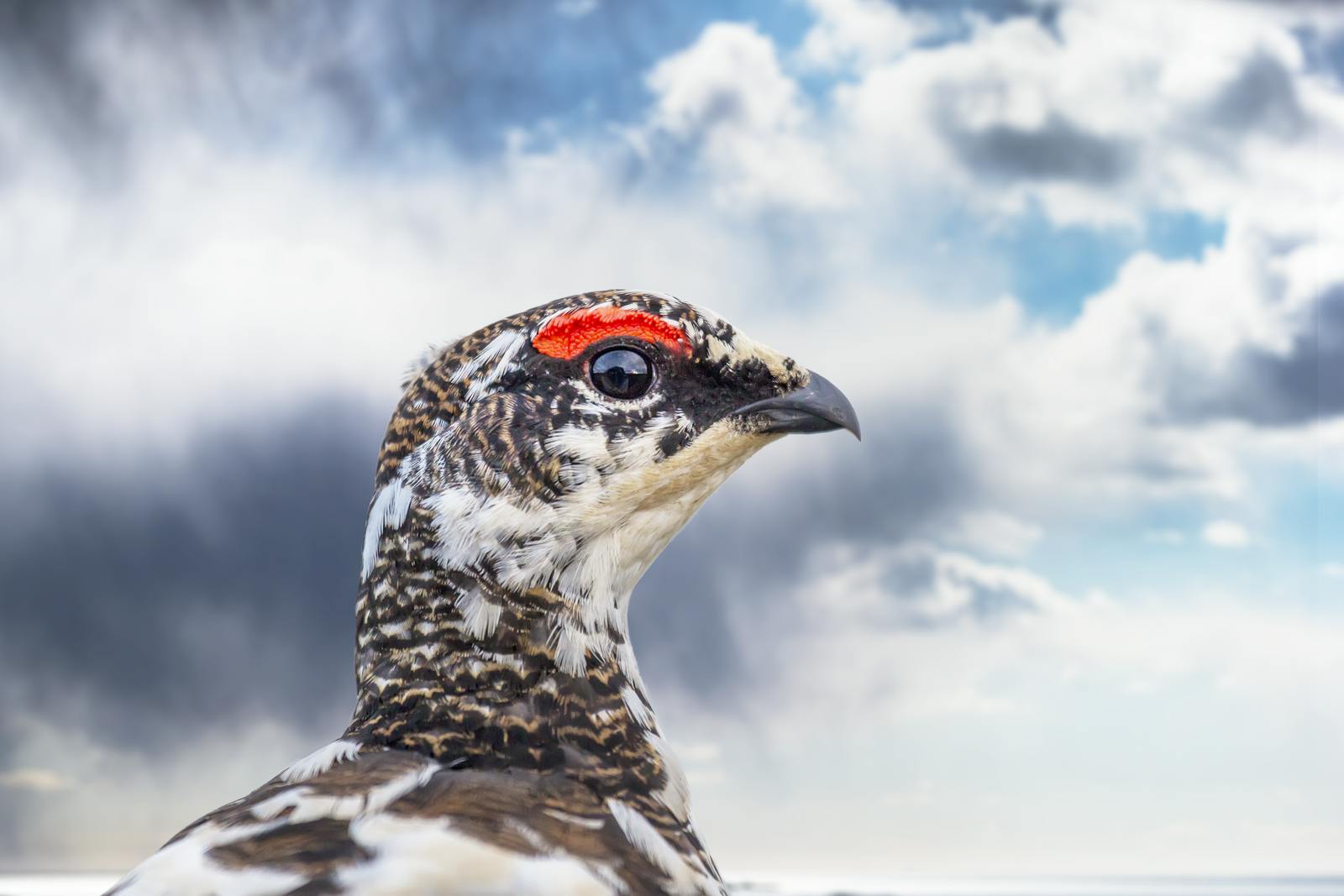
Spot the Ptarmigan
Ptarmigan is found all around Iceland, but as its name indicates, its habitat is mainly in the mountains and on the moors. The ptarmigan is a sedentary bird living in Iceland all year around. Migrations from the mountains to lower altitudes are usual when snow covers the feeding grounds. During that time the ptarmigan is often seen in birch forests (Betula pubescens) where there is good shelter and food abundance.
The ptarmigan population is strong in Iceland but fluctuates greatly over the years, with peak numbers within the ten year interval. During the top, its number is estimated to be over 2.5 million birds, but only about 500 thousand during the lowest.
Embark on a thrilling journey to uncover the enchanting secrets of Icelandic nature and wildlife at Reykjavík's Perlan Museum. Explore a world of exciting activities that allow you to dive into the wonders of Iceland. Designed for everyone, this unique experience brings together the beauty and nature of Iceland in one fantastic place at the Perlan Museum. Discover more about the exhibitions at Perlan here.
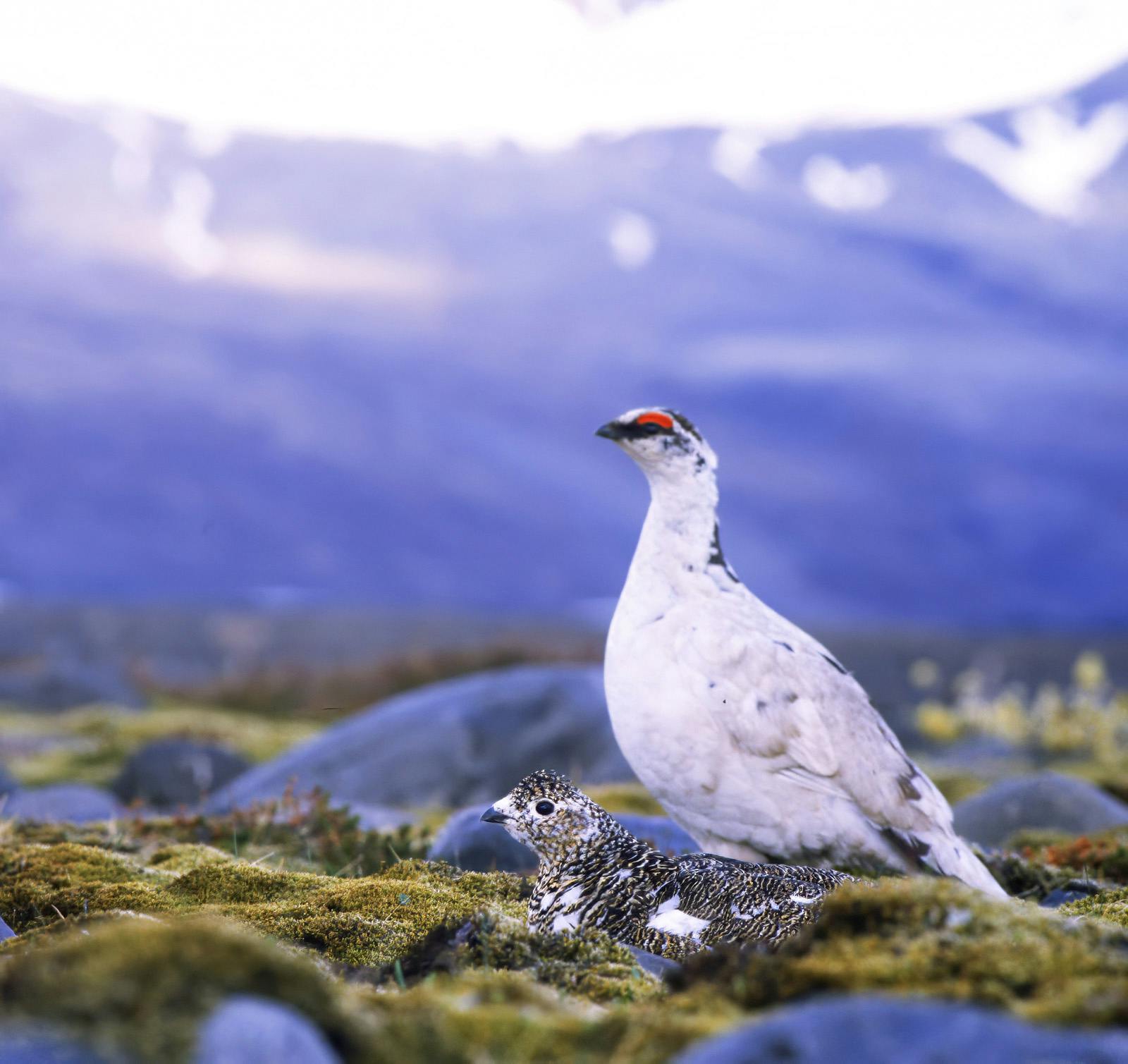
Changing Colours Between Seasons
Ptarmigan changes colour between seasons to camouflage in the surrounding environment. Both the male and female are white during winter with feathered feet, black beaks and black tail feathers. In spring, the female ptarmigan, most often called „rjúpa“ in Icelandic, changes colour from white to brownish. The male, which is called „karri“ in Icelandic, wears his white winter plumage longer in the spring than the female.
Each male has his own territory, which he defends toward other ptarmigan males. The male is very impressive in the spring, cherishing stones and grass-stoppers to prove his ownership to other males. The white plumage and red comb confront whoever dares to look at his female or his territory. Due to this display, the male is easy prey for avian predators during spring. The male makes a few nests within his territory, and then the female chooses the one she lays her eggs in. In late May, both the male and female have got the brownish summer plumage, which helps them to hide from predators.
Males Can Own Nests With Many Females
Ptarmigans lay 5-15 slightly brownish eggs with black spots. The nest is a well-hidden dent in the ground, usually within heavy vegetation, and is lined with dry grass and feathers. The eggs hatch in about 3 weeks.
Ptarmigans are often polygamous. Males often lay eggs with several females and even adopt widows and their chicks. When the chicks hatch, they leave the nest with the female as soon as they are dry. The chicks have very good camouflage, which helps them disappear into their surroundings. They are light brown with dark brown stripes on the head and back.
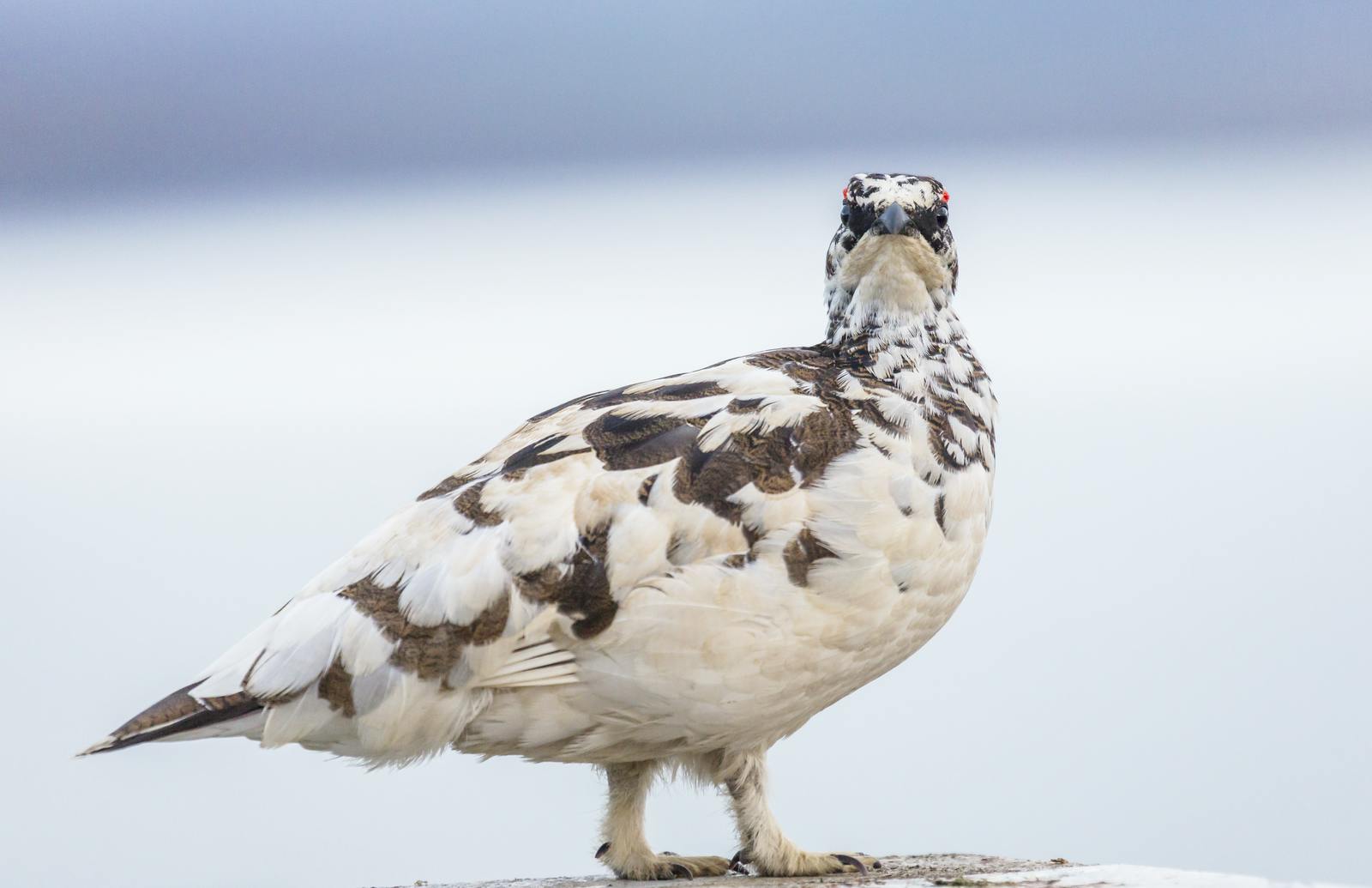
Ptarmigan chicks can fly short distances soon after fledging and find their own food. Young chicks mostly feed on insects but all kinds of herbs become important food as the chicks mature. Alpine bistort (Bistorta vivipara), willow buds (Salix herbacea), mountain avens (Dryas octopetala) and birch, along with berries, are on the ptarmigan menu. Ptarmigan families often stay close together in the fall as they are very social birds. When winter arrives, both males and females change the brownish summer plumage to the white winter colour.
The Ptarmigan is Hunted By Many
Ptarmigan has many dangerous enemies which take a toll on the population each year. Number one is the Icelandic Gyrfalcon (Falco rusticolus) as ptarmigan is about 70% of its prey over the year. There is a great correlation between the size of the gyrfalcon population and the ptarmigan population. The same fluctuations are observed 3-4 years later in the gyrfalcon population than the ptarmigan.
Number two is the Arctic fox (Vulpes lagopus) who is both a great ptarmigan hunter and a great nest sniffer. Many adult ptarmigans, eggs and chicks are lost to the foxes jaw.
Last but not least of the ptarmigan predators is the thinking man (Homo sapiens). Ptarmigan has been the most popular game bird of Icelanders for a long time. At the beginning of the 20th century, ptarmigans were hunted, and hundreds of thousands were exported to Europe each year. A lot has changed during these years, and today, all trades of ptarmigans are forbidden by law. Despite these laws, ptarmigans can be hunted for the hunter's own consumption, and they are still the most popular Christmas meal in Iceland. For the past decade, about 5000-6000 hunters march the mountains, hunting a total of 35-45 thousand ptarmigans during the hunting season each year.
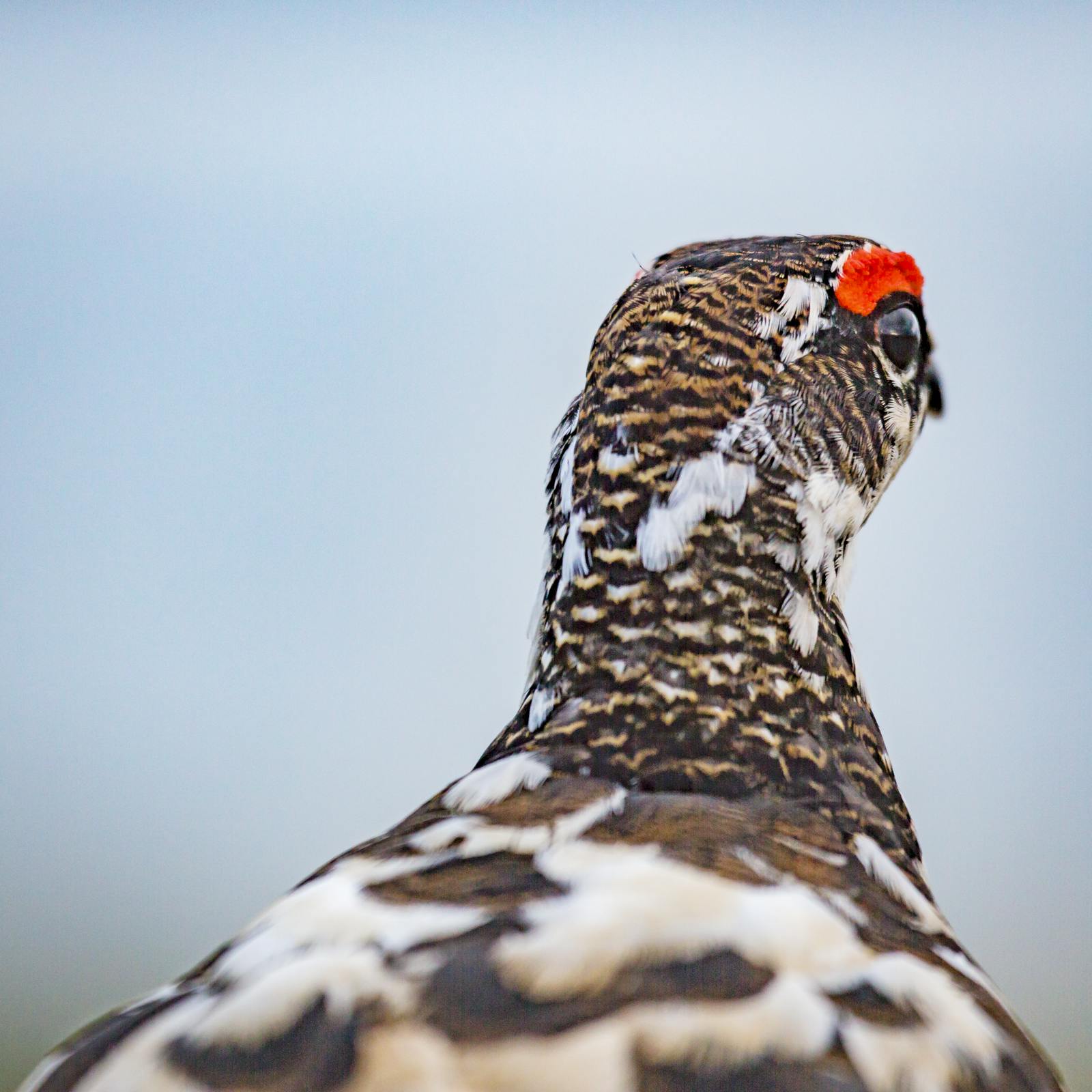
The Sister of the Gyrfalcon?
The ptarmigan is a beautiful and peaceful bird that is heavily hunted by humans and predators. Icelanders care dearly for the ptarmigan, as the bird helped many families survive the harsh winter months in the past. Many folklore, superstitions, and poems have been created about the Icelandic ptarmigan.
One famous story is about the connection between the gyrfalcon and the ptarmigan which explains why ptarmigans have feathered feet and why they are persecuted by gyrfalcons. As the story goes St. Mary called upon all birds of the world to test their obedience. St. Mary commanded the birds to walk through fire, which burned all of their feathered feet. The ptarmigan was the only bird to deny, and as a punishment, St. Mary cursed the ptarmigan for her disobedience. It would follow that her brother, the gyrfalcon, would persecute, kill and feast on her flesh for eternity.
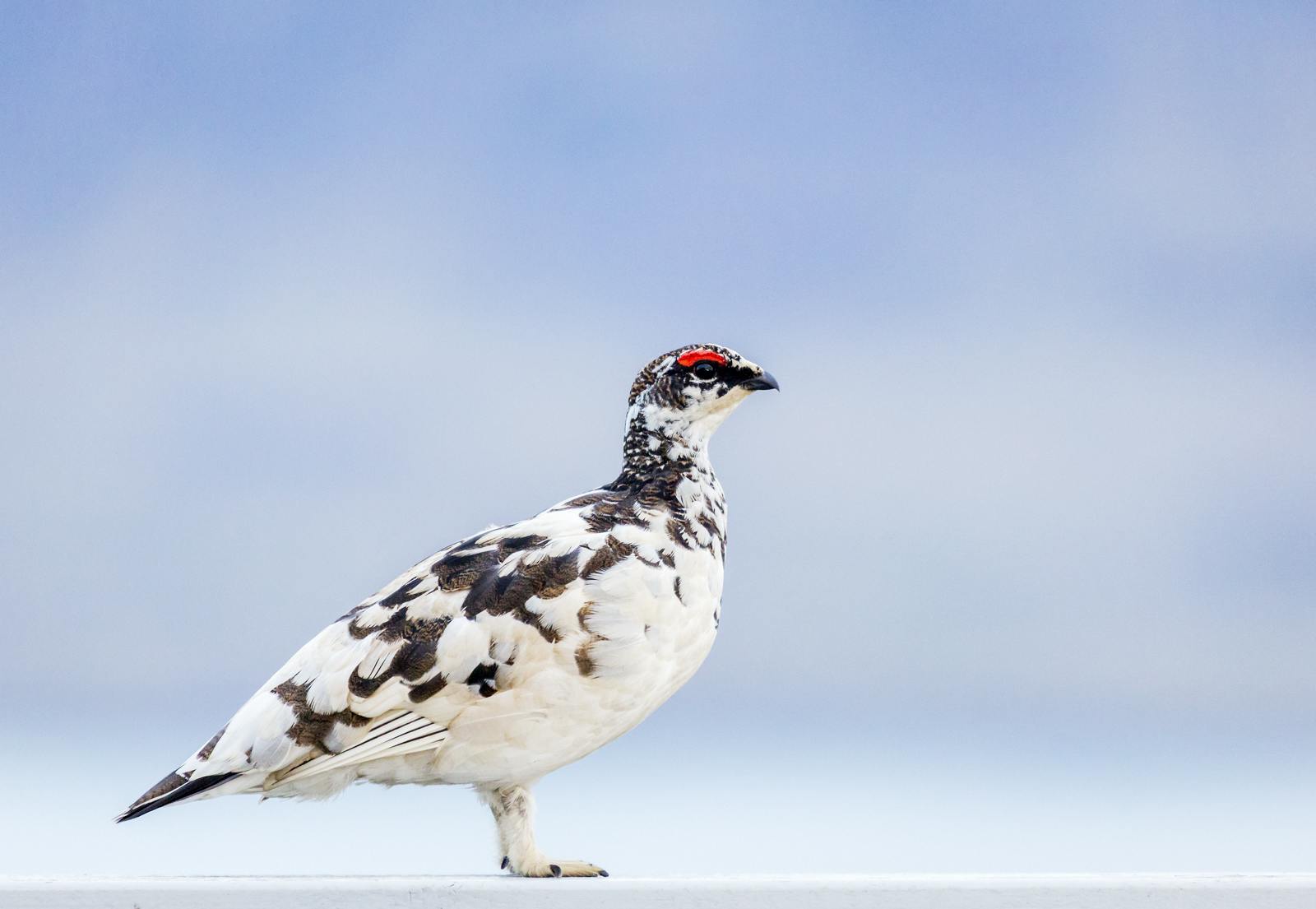
Five Icelandic Superstitions About the Ptarmigan
- If white ptarmigans flew with noise over people's dwellings, then the inhabitants were doomed to die.
- To dream ptarmigans meant that the winter would be harsh with heavy snow.
- If there were only ptarmigan feathers in a man's bed, that man would become immortal.
- If a pregnant woman eats ptarmigan eggs then the baby would get freckles.
- „To push as the ptarmigan around the pole“ is a famous Icelandic expression. It is based on the story that if a pole is set up in the middle of a ptarmigan nest, the bird will try to lay as many eggs as it can to cover the pole but dies after laying egg number 19.







